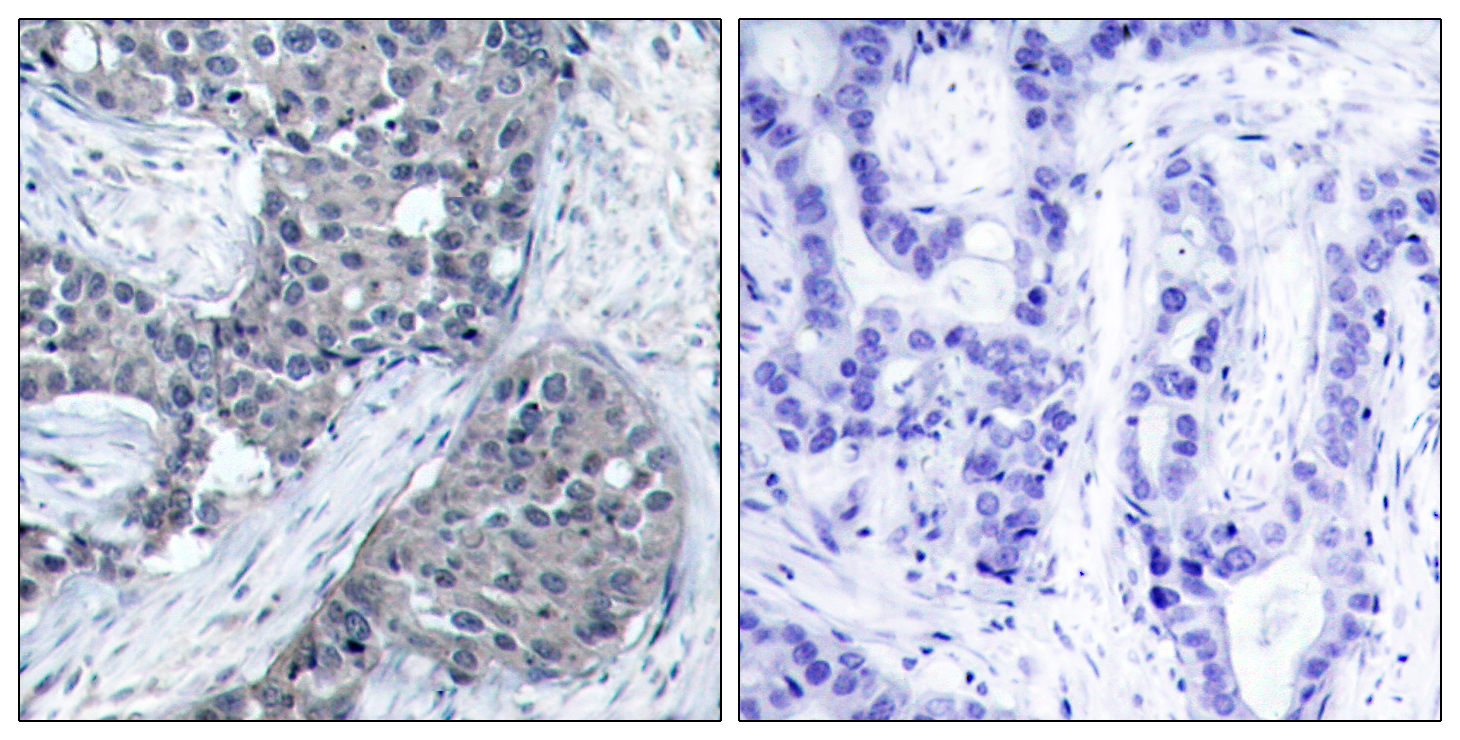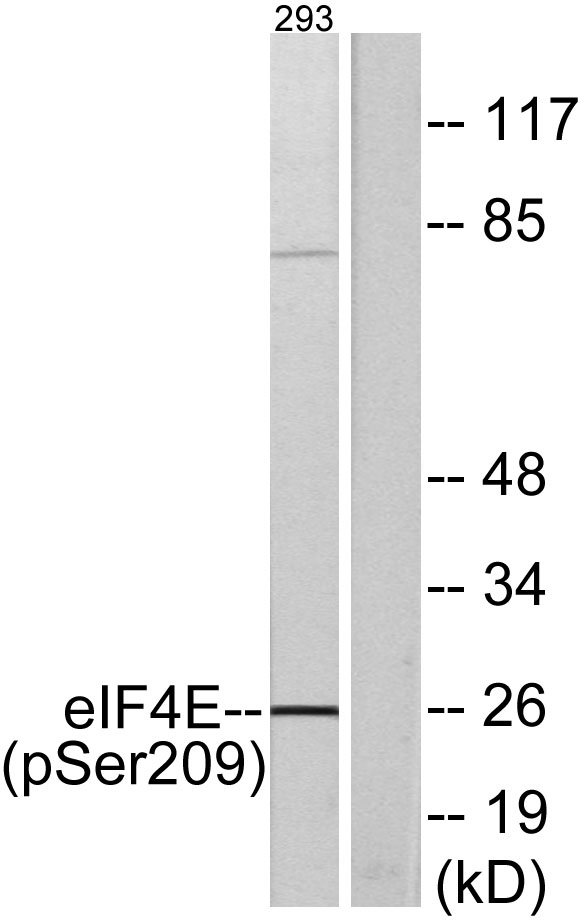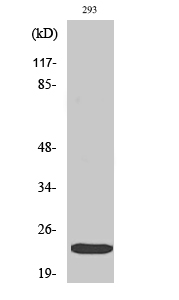产品名称
eIF4E (phospho Ser209) Rabbit Polyclonal Antibody
别名
EIF4E; EIF4EL1; EIF4F; Eukaryotic translation initiation factor 4E; eIF-4E; eIF4E; eIF-4F 25 kDa subunit; mRNA cap-binding protein
蛋白名称
Eukaryotic translation initiation factor 4E
存储缓冲液
Liquid in PBS containing 50% glycerol, 0.5% BSA and 0.02% New type preservative N.
Human Gene Link
http://www.ncbi.nlm.nih.gov/sites/entrez?db=gene&term=1977
Human Swissprot No.
P06730
Human Swissprot Link
http://www.uniprot.org/uniprotkb/P06730/entry
Mouse Gene Link
http://www.ncbi.nlm.nih.gov/sites/entrez?db=gene&term=13684
Mouse Swissprot No.
P63073
Mouse Swissprot Link
http://www.uniprot.org/uniprot/P63073
Rat Gene Link
http://www.ncbi.nlm.nih.gov/sites/entrez?db=gene&term=117045
Rat Swissprot Link
http://www.uniprot.org/uniprot/P63074
免疫原
The antiserum was produced against synthesized peptide derived from human eIF4E around the phosphorylation site of Ser209. AA range:168-217
特异性
Phospho-eIF4E (S209) Polyclonal Antibody detects endogenous levels of eIF4E protein only when phosphorylated at S209.
稀释度
WB 1:500 - 1:2000. IHC 1:100 - 1:300. ELISA: 1:20000.. IF 1:50-200
宿主
Polyclonal, Rabbit,IgG
背景介绍
The protein encoded by this gene is a component of the eukaryotic translation initiation factor 4F complex, which recognizes the 7-methylguanosine cap structure at the 5' end of messenger RNAs. The encoded protein aids in translation initiation by recruiting ribosomes to the 5'-cap structure. Association of this protein with the 4F complex is the rate-limiting step in translation initiation. This gene acts as a proto-oncogene, and its expression and activation is associated with transformation and tumorigenesis. Several pseudogenes of this gene are found on other chromosomes. Alternative splicing results in multiple transcript variants. [provided by RefSeq, Sep 2015],
组织表达
Brain,Fetal brain,Placenta,Pooled,Small intestine,Testis,
细胞定位
Cytoplasm, P-body . Cytoplasm . Cytoplasm, Stress granule . Nucleus . Interaction with EIF4ENIF1/4E-T is required for localization to processing bodies (P-bodies) (PubMed:16157702, PubMed:24335285, PubMed:25923732). Imported in the nucleus via interaction with EIF4ENIF1/4E-T via a piggy-back mechanism (PubMed:10856257). .
信号通路
mTOR;Insulin_Receptor;
功能
caution:Was originally thought to be phosphorylated on Ser-53 (PubMed:3112145); this was later shown to be wrong (PubMed:7665584).,function:Recognizes and binds the 7-methylguanosine-containing mRNA cap during an early step in the initiation of protein synthesis and facilitates ribosome binding by inducing the unwinding of the mRNAs secondary structures.,PTM:Phosphorylation increases the ability of the protein to bind to mRNA caps and to form the eIF4F complex.,similarity:Belongs to the eukaryotic initiation factor 4E family.,subunit:eIF4F is a multi-subunit complex, the composition of which varies with external and internal environmental conditions. It is composed of at least EIF4A, EIF4E and EIF4G1/EIF4G3. EIF4E is also known to interact with other partners. The interaction with EIF4ENIF1 mediates the import into the nucleus. Nonphosphorylated EIF4EBP1, EIF4EBP2 and EIF4EBP3 compete with EIF4G1/EIF4G3 to interact with EIF4E; insulin stimulated MAP-kinase (MAPK1 and MAPK3) phosphorylation of EIF4EBP1 causes dissociation of the complex allowing EIF4G1/EIF4G3 to bind and consequent initiation of translation. Rapamycin can attenuate insulin stimulation, mediated by FKBPs. Interacts mutually exclusive with EIF4A1 and EIF4A2. Interacts with NGDN and PIWIL2 (By similarity). Interacts with Lassa virus Z protein.,
纯化
The antibody was affinity-purified from rabbit antiserum by affinity-chromatography using epitope-specific immunogen.



